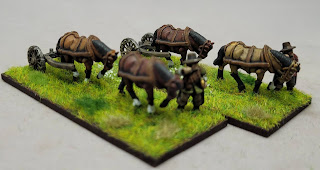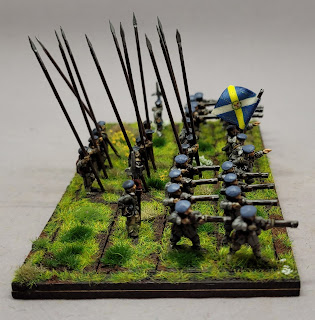Houses of Interest: Grampian
What's this, another Scottish entry for the inappropriately named ECWtravelogue? This time our spotlight falls on the Grampian region.
This post is also a bit of a milestone, as this is my 500th post.
Aberdeen was the site of two battles. In 1644 Montrose routed a Covenanter Army, led by Robert Balfour, 2nd Lord Balfour of Burleigh.
On the morning of September 13th, 1644, the Covenanter forces left the town to confront the attackers. They took up a defensive position on a steep ridge southwest of the town, overlooking the valley of the How Burn.
Montrose sent a messenger and drummer under a flag of truce to demand the surrender of the city, or the defenders could expect no quarter. He also requested that they send women, children and the elderly out of the town before his attack.
Aberdeen's leading citizens and guild leaders were presented with an ultimatum near the current location of Justice Mill Lane. Despite rejecting it, they hosted the Royalist party graciously, offering them drinks, and one of the magistrates even gave the drummer a coin valued at £6.
While returning to the Royalist camp, a trooper from the Fife regiment fired at the Royalist party, killing their drummer. A furious Montrose reportedly ordered an immediate attack and allowed his troops to sack the town.
After two hours of battle, Montrose's men routed the Covenanter force, killing over 500 of them. Then went into Aberdeen and sacked it, raping their way through the town, killing 118-160 people in the process.
What's there now?
The Kirk of St Nicholas Uniting has four large embroidery panels - itemised as ‘Four Pieces of Tapestry’ or ‘Hangings for the decorement of the King’s Loft in Nicholas Kirk in dayes of Solemnitie’, belong to the first half of the seventeenth century. Donald Farquharson of Monaltrie slain by a pistol-shot in street fighting in Aberdeen on 16th March 1645. His death was much lamented by the Marquis of Montrose, who had his body buried with military honours in Drum's Aisle of St. Nicholas Church, Aberdeen. A Victorian plaque marks the supposed spot. The Kirk has been used as a community arts space but appeared to be up for sale when I visited.
 |
| The Crabstane of Aberdeen |
The Crabstane of Aberdeen is one of a number of markers that denote the old town borders. The Crabstane is located on the edge of the 1644 battlefield. (It's on the side of the conveniently named bar/restaurant The Crabstane of Aberdeen.)
 |
| Bon Accord Gardens |
The 1644 battle took place in the vicinity of Bon Accord Gardens.
Elsewhere in Aberdeen...
 |
| The Dee, from the Brig |
The Brig O' Dee was the route taken by William Keith, 7th Earl Marischal and the Marquess of Montrose (yes he was a Covenanter at the time - confusing isn't it?) when they led a Covenanter army of 9000 men in the First Bishops' War in 1639.
Muskies mother* has made a vowThat she will take her venter,And thunder throughe brige of DeeLed by a Covenanter.The Covenanters that ye seeCome marching alongest the grein,Wer not for feare of God they say,They wold plounder Aberdeine
'Battle of the Bridge of Dee' in James Maidment, ed., A Book of Scottish Pasquils, 1568-1715
.jpg) |
| Drum Castle |
Drum Castle, cared for National Trust Scotland, was the home of Sir Alexander Irvine of Drum. Drum played a role in the Covenanting Rebellion leading to its being attacked and sacked three times.
 |
| Muchalls Castle |
Muchalls Castle played host to a meeting of the Covenanters in 1638 prior to the Bishops Wars. Muchalls is a private residence, but opens to visitors May-September.
 |
| Kildrummy Castle |
Kildrummy Castle was home to Montrose in September 1644. It would be garrisoned by Royalists in 1654, before falling to Commonwealth forces led by Colonel Morgan on the 13th February. The castle fell into ruin in the C18th. The castle is now cared for by Historic Environment Scotland.
The Battle of Alford took place on the 2nd July 1645. Montrose defeated the Covenanter army commanded by William Baillie.
Both sides seemed to be fairly evenly matched in size, although Baillie later insisted the Royalists had the advantage in numbers. Upto 1,000 of Baillie's men appear to have been hastily recruited local militia. Both sides numbered approx 2000 foot, and a few hundred cavalry.
With MacColla absent, the Irish troops supporting Montrose were led by Manus O'Cahan, who demonstrated remarkable military discipline during the battle by deploying his men at a critical moment. This was the first battle where Montrose's Irish forces were outnumbered by his Scottish troops. With the addition of the Strathbogie and other Gordon regiments, Montrose now had a larger number of Lowlanders compared to Highlanders.
On the morning of July 2nd, Montrose positioned his army to confront Baillie immediately after he crossed the river. Different interpretations of the battle place the fighting either north or north-west of the village of Alford.
What's there now?
The Gordon Stone
The Gordon stone reputedly marks the spot where George, Lord Gordon fell in battle. The stone is handily placed between a cemetery and a monumental mason's.
 |
| The site of the Boat of Forbes |
The Boat of Forbes Inn is long since gone, it stood on the corner opposite the Forbes Inn, both of which are adjacent to the Bridge of Alford.
 |
| Bridge of Alford |
The Old Kirkyard of Alford is believed to be the final resting place of 300 Covenanters who died in the battle. Archaeological evidence cannot confirm this though.
 |
| Old Kirkyard of Alford |
 |
| impressive C17th funerial monument in the Kirkyard |
Kildrummy Castle was garrisoned by Montrose in September 1644. It would be garrisoned again for the King in 1654, when their tenure was not quite as peaceful as Montrose's. Besieged by a Commonwealth force led by Colonel Morgan, the garrison would surrender on the 13th February 1654, and a new garrison took up residence.
The Castle started falling into ruins in the mid C18th, it is now cared for by Historic Environment Scotland.
C13th Fyvie Castle saw a minor battle on the 28th October 1644, when Manus O'Cahan and Montrose successfully beat a Covenant Army at Fyvie Castle.
 |
| Fyvie Castle |
Montrose's men would over winter here, their encampment being well preserved in the castle grounds (best viewed when the field is bare of crops).
Cared for by National Trust Scotland, viewing is only possible via guided tours. There is an eclectic militaria collection unconnected to the castle's history, which features a zischagge and English three bar pot - both polished within an inch of their life.
Walter Scott's influence on Scottish Victorian/Edwardian lifestyles saw considerable extensions/adaptations to the castle in the 1880s, with considerable homage paid to Charles I.
Huntly Castle had been ordered to be slighted in 1594, but had started being restored as a dwelling rather than as a fortification early in the C17th. It was still practically a ruin in 1643 when Montrose held it briefly against a besieging Argyll.
 |
| Huntly Castle |
The Castle would be left alone until 1647 when Lord Charles Gordon held it against Leslie.
Gordon's men bolstering the defences with earthworks Despite this he was forced to surrender due to starvation. His officers were beheaded, and the Irish troops hanged. In December 1647 the Marquess of Huntly was captured and on his way to execution at Edinburgh was detained, by a refinement of cruelty, in his own mansion. His escort was shot against its walls.
The ruins are cared for by Historic Environment Scotland.
* the name of a large cannon
Postcodes for SatNavs
The Kirk of St Nicholas Uniting, New Vestry, Back Wynd AB10 1JZ
Postcodes for SatNavs
The Kirk of St Nicholas Uniting, New Vestry, Back Wynd AB10 1JZ
The Crabstane of Aberdeen, 67 Langstane Place AB11 6EN
Bon Accord Terrace Gardens AB11 6DH
Brig O' Dee, Stonehaven Road AB10 7JP
Drum Castle, Drumoak, Banchory AB31 5EY
Muchalls Castle, Stonehaven AB39 3RS
Kildrummy Castle, Kildrummy AB33 8RA
The Gordon Stone, Parkhill Road, Alford AB33 8FE
The Gordon Stone, Parkhill Road, Alford AB33 8FE
site of the Boat of Forbes & Bridge of Alford AB33 8QJ
Old Kirkyard of Alford, Alford AB33 8NL
Kildrummy Castle, Kildrummy, Alford AB33 8RA
Fyvie Castle, Turriff AB53 8JS
Kincardine Castle, Auchterarder PH3 1PG
Huntly Castle, Castle Street, Huntly AB54 4SH
If you enjoyed reading this, or any of the other posts, please consider supporting the blog.
Thanks.


















Great stuff and congratulations on your 500th post. Huntly Castle looks particularly fine. I've only been to Aberdeen once, and spent much of the time inspecting Scottish Hydro's data centre, so didn't get a chance to see the sights around the city.
ReplyDeleteThank you for your kind words Martin
DeleteCongratulations on your 500th post. Quite a landmark.
ReplyDeleteThank you. Still surprised that I can find 'new' stuff to wax lyrical about
Delete